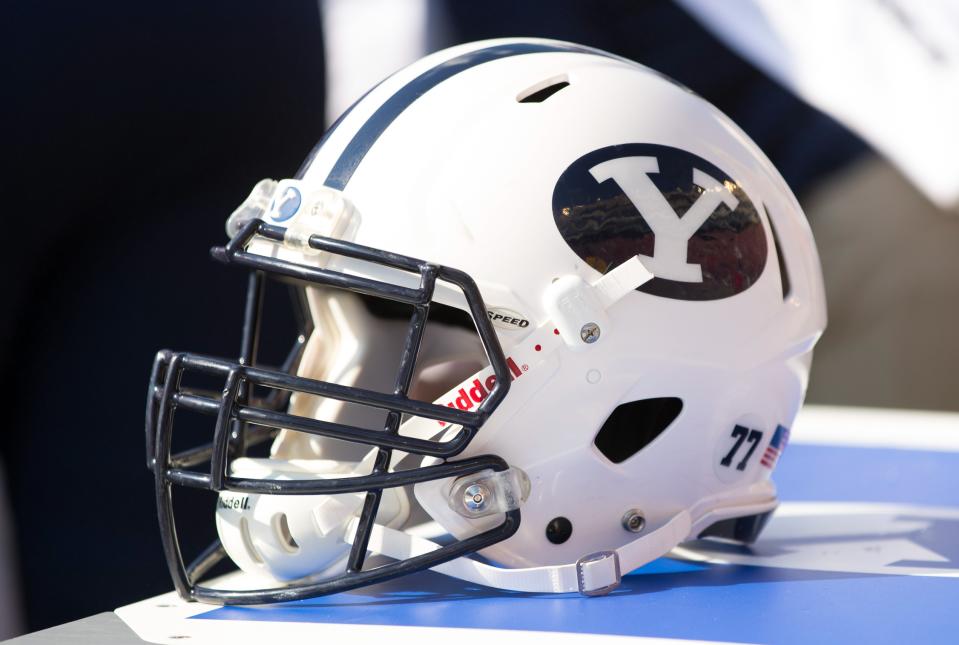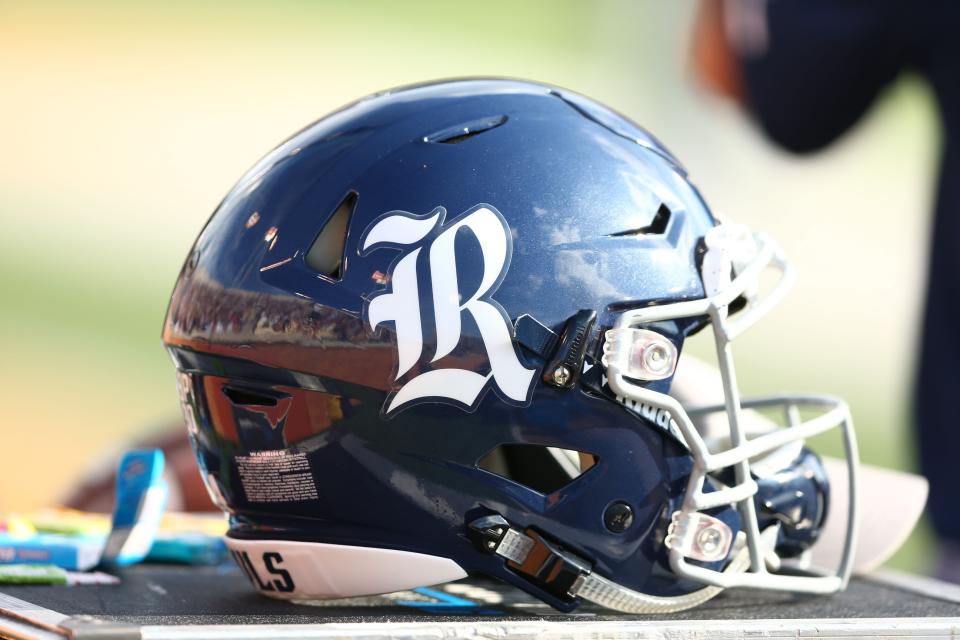Every FBS conference realignment change in 2024

Today is the start of the month of July. For many, that means a jump on the July 4th festivities with fireworks and firing up the grills for some burgers and hot dogs. But today is a milestone day for college athletics as it marks the beginning of the new fiscal years for conferences. And with that comes a flurry of official conference realignment changes for the upcoming college athletics calendar.
The Big Ten is not making any changes this year, but the one-year countdown to the additions of USC and UCLA from the Pac-12 is now officially underway. The highest profile changes this year will take place in the Big 12 as the conference adds four new members and begins the final year with Oklahoma and Texas before the Sooners and Longhorns ride off to the SEC a year from now.
To keep you updated on all of the changes we are about to see in college football this fall, here is a look at the conference alignment changes going down effective today.
Big 12

New members: BYU, Cincinnati, Houston, UCF
Departing members: None in 2024, but Oklahoma and Texas leave in 2025
The Big 12 is the big headline today as it adds four of the top programs from outside the power conference structure. It’s been a dream finally realized for BYU, which abandons its football independence for the first time since breaking off from the Mountain West Conference during the last major round of conference realignment changes that hit the sport.
But this is also a major milestone for Cincinnati, Houston, and UCF, three of the top Group of Five programs of the College Football Playoff era. It is particularly great for Houston, who reunites with former Southwest Conference rivals like Texas Tech and Baylor (and Texas for a year) for the first time since being left behind in the formation of the original Big 12.
Cincinnati is the only program to reach the College Football Playoff as a Group of 5 program, and UCF has certainly kicked up some dirt in the national debate during their time in the national spotlight.
Houston, Cincinnati and UCF are all leaving the American Athletic Conference, which is next on our list. But before getting to that, it is important to remember the Big 12 is set to lose two more charter members, and its two biggest brands, a year form now. Oklahoma and Texas are set to leave the Big 12 for the SEC in 2025, the same time when the Big Ten will be adding USC and UCLA. Rumors about further Big 12 expansion will continue with a program like Colorado has been mentioned frequently as a potential candidate to return to the Big 12.
At one point it felt as though the Big 12 was on the verge of total implosion. That is not so much the case now, but the conference’s overall standing as a perceived power conference could be in question.
American Athletic Conference

New members: Charlotte, Florida Atlantic, North Texas, Rice, UAB, UTSA
Departing members: Cincinnati, Houston, UCF
To say the American Athletic Conference will have a new look in 2024 is a massive understatement. After losing three of its top programs to the Big 12, the AAC is raiding Conference USA for new members. And it just added six new members to make up for the three it lost.
What once felt like a good move for Conference USA to include these programs, some of which were full of future growth and potential as growing programs, will now be relied on to keep things afloat in the AAC. There is a definite move into Texas with the additions of three schools in Texas (North Texas, Rice, and UTSA) to go with SMU and make up for the loss of Houston.
Adding UAB brings the conference into Alabama for the first time and the addition of FAU is the best the conference could do to make up for the loss of UCF as a Florida member to go with USF. Planting the AAC flag in North Carolina, Florida, Texas, and Alabama gives more southern flair to the conference, but it may prove difficult to make up fully for the loss of the three schools it is losing.
Conference USA

New members: Liberty, New Mexico State, Jacksonville State, Sam Houston
Departing members: Charlotte, Florida Atlantic, North Texas, Rice, UAB, UTSA
After being raided by the AAC, Conference USA dropped the hyphen in its abbreviations (they go with CUSA now instead of C-USA in case you missed the important memo), Conference USA was left in a difficult spot. It added two former independent programs in Liberty and New Mexico State and welcomed former FCS powerhouses Jacksonville State and Sam Houston to to the fold.
Liberty has enjoyed a quick rise as a football program as a relatively new program overall, thanks to the large financial commitment and backing by the school and its donors. New Mexico State was left out of a major round of realignment changes years back when the Sun Belt Conference picked up the Aggies from the fallout of the demise of the WAC, but that was a short-term solution for New Mexico State, which has lived as a struggling independent since 2018.
Conference USA is a conference that college football diehards will continue to watch every week, but the conference has lost some stability with the departures this year. Can these new members rise up and provide some sparks?
What's next for the Big Ten?

The Big Ten is not making any changes in 2024, but there is a big change coming in 2025 with the additions of USC and UCLA. The expansion brings the Big Ten to the west coast and helped put the Pac-12 on the brink of a potential downfall. For the moment, the Pac-12 looks like it will remain standing with programs like Oregon and Washington still onboard and Colorado grabbing plenty of headlines with Deion Sanders as head coach.
But it remains to be seen if the Big Ten will kick up any more dust in the next two years. Keep this in mind because the Big Ten has only updated its conference schedule for the next two years, the first two years with USC and UCLA in the conference. Does that give the Big Ten a little more time to plan out any potential expansion before committing to more future schedules?
What's next for the SEC?

When the Big Ten adds USC and UCLA, the SEC will be adding Oklahoma and Texas. For now, it seems as though the SEC will rest on that move. But never say never when it comes to adding in the SEC either. But the right moves for the SEC at this point may be limited.
Florida State and Clemson have been rumored to be a pair of potential realignment additions for the Big 12 or SEC for as long as we have been covering conference realignment, but the two ACC powers don’t add any TV viewers to the SEC that it doesn’t already have. And the ESPN connection with the SEC and ACC as broadcast partners with the SEC Network and ACC Network may end up helping keep Florida State and Clemson where they are.
Is the Pac-12 on high alert?

The Pac-12 is now the conference that appears to be at the most serious risk moving forward, among the power conferences. After it loses USC and UCLA, the conference will lose its stronghold in California (no disrespect to Stanford and Cal, but facts are facts). For now, the eyes are on potential expansion with San Diego State of the Mountain West Conference being the school to watch at the moment.
But talk of Colorado heading back to the Big 12, albeit a very different Big 12 it once lived in, is well worth monitoring in the changing landscape. And if Colorado was to leave for the Big 12, would anyone come with them? Utah (maybe not if BYU has a say)?
And then there is the idea that some believe that Oregon and Washington could still be in the plans for the Big Ten’s next move. It would make sense for the Big Ten to add to its west coast presence after landing USC and UCLA. Oregon and Washington are the two next biggest brands to add, and it would certainly be a profitable move for the conference.
So yes, the Pac-12 has some things to focus on. The first order of business is filling the vacancies coming up.

